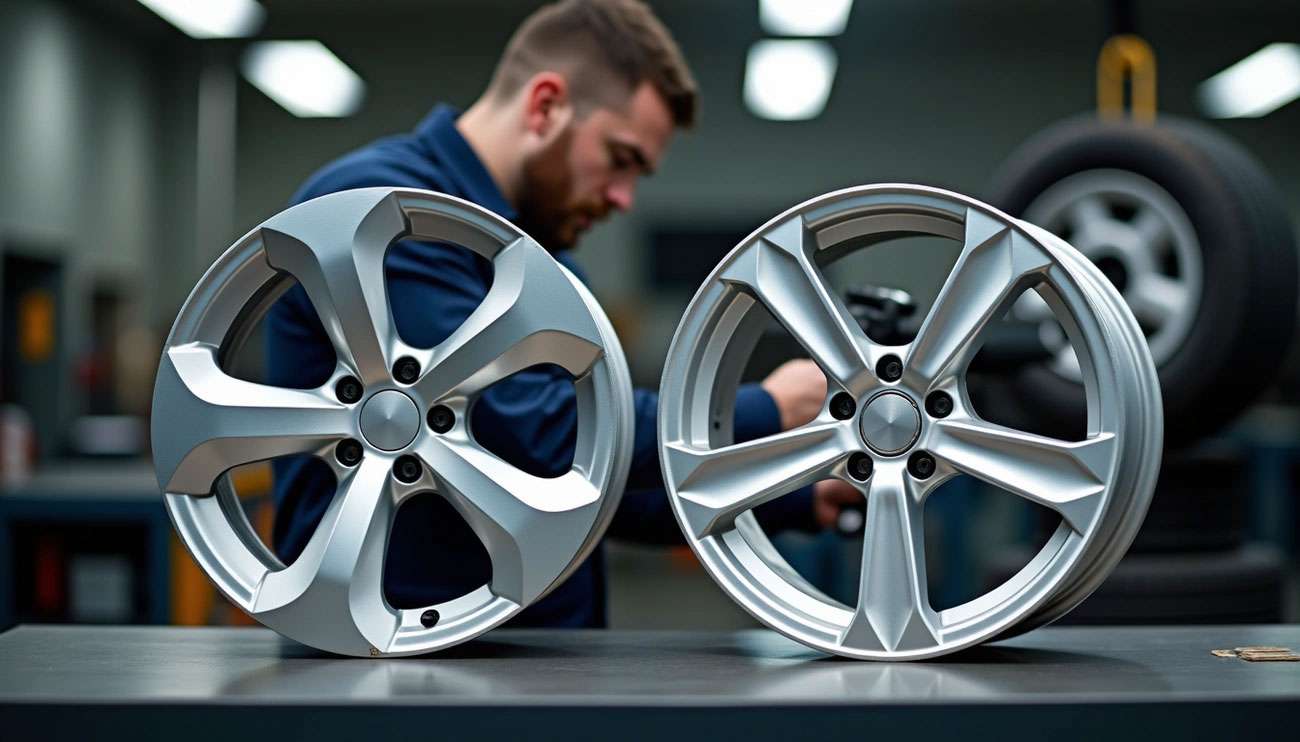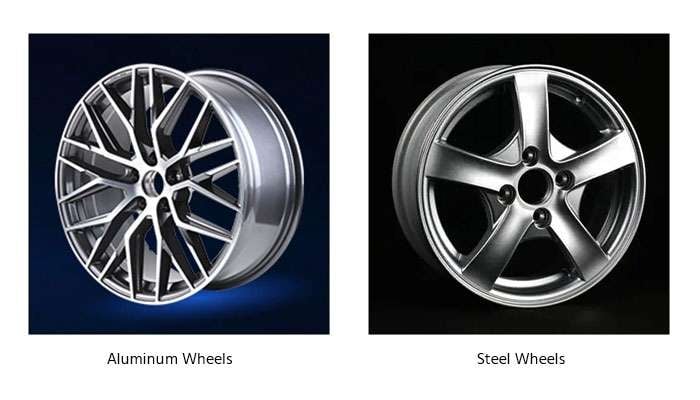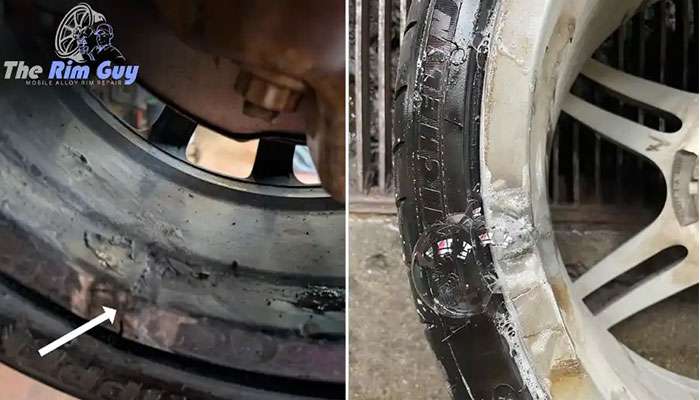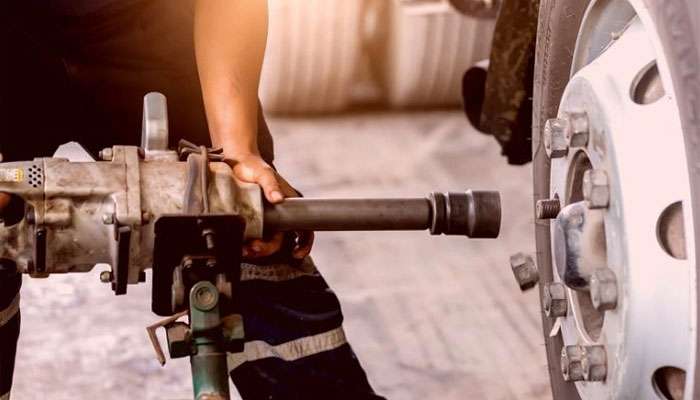
Quality rims are essential for your vehicle's performance, safety, and long-term value. Aluminum rims typically last between five and ten years, while steel rims can endure for up to 15 years or more. Understanding these differences helps you make smart purchasing decisions that protect your investment.
When selecting rims, the material choice significantly impacts both performance and durability. Steel and aluminum options each offer distinct advantages, and recognizing quality indicators can save you from expensive replacements down the road. Poor-quality rims not only compromise your vehicle's appearance but can lead to dangerous failures that put you at risk.
Manufacturing standards vary dramatically between brands and regions. Manufacturing costs in Taiwan run typically 15% higher than those in China primarily due to superior quality control and finishing processes. A manufacturer's reputation and market longevity serve as reliable indicators of rim quality, whether you're purchasing rims with your vehicle or upgrading to aftermarket options.
We'll guide you through exactly how to identify high-quality rims, what to examine when considering used options, and which warning signs indicate poor construction that could result in costly failures. This expert knowledge ensures you make confident rim purchases that deliver lasting performance and safety.

Image Source: Chalco Aluminum
Quality rims deliver more than just appearance—they provide the safety and performance your vehicle demands. At Performance Plus Tire, we understand that evaluating rim quality requires knowledge of both materials and manufacturing processes.
High-quality rims begin with superior manufacturing processes that meet international quality standards such as ISO9001, QS9000, TUV of Germany, or VIA of Japan. These standards establish the critical production requirements manufacturers must follow to ensure structural integrity. Dimensional tolerances should meet strict Original Equipment market standards rather than the more relaxed standards allowed for many aftermarket products.
The protective finish quality significantly affects how your wheels will look years from now. Top-tier manufacturers back their finish warranties with reputations built on consistently delivering excellent products. A manufacturer's reputation remains the most reliable indicator of rim quality since distinguished reputations come from years of superior performance.
The magnet test provides the simplest identification method. Magnets stick to steel but won't adhere to aluminum. For visual inspection, examine the design—aluminum wheels typically feature intricate patterns, while steel wheels maintain simpler designs.
Weight offers another reliable clue. Steel wheels are considerably heavier than their aluminum counterparts. For precise testing, use a clean white cloth with white polish on the rim surface. Uncoated aluminum will quickly show black residue on your cloth, whereas clearcoated aluminum will not.
Steel wheels, made from an alloy of carbon and iron, offer exceptional durability and cost-effectiveness. These wheels excel in harsh road conditions, particularly winter driving, as their extra weight provides better snow traction. Steel rims cost approximately 2-3 times less than aluminum alloy wheels.
Aluminum alloy wheels—primarily aluminum combined with elements like manganese, magnesium, chromium, and titanium—provide several performance advantages. They're substantially lighter, which improves fuel efficiency, acceleration, and braking performance. Aluminum wheels provide over 3 times higher heat dissipation than steel wheels, effectively managing brake-generated heat and enhancing safety.
Carbon fiber rims represent the premium option—lightest and strongest but also most expensive. These are typically reserved for high-performance or luxury vehicles where weight reduction is paramount.

Image Source: The Rim Guy
Proper rim inspection saves you from expensive repairs and dangerous road failures. These visual checks help you spot quality issues before they become serious safety hazards.
Start your inspection in good lighting to catch subtle damage. Clean the wheels completely first—dirt hides critical problems you need to see. Examine the outer rim thoroughly, then remove the wheel to check the back side where damage often goes unnoticed. Hairline cracks are particularly easy to miss but extremely dangerous.
Rim cracks create serious safety risks. They cause air leakage, tire failure, and can lead to complete wheel failure while driving. Small fractures grow larger over time, especially under vehicle load. Run your fingers along alloy wheel surfaces to feel for irregularities that aren't visible to the eye.
Corrosion starts when the protective coating fails, letting moisture attack the metal. Steel rims show obvious rust, but aluminum can also corrode and weaken structurally. Look for discoloration, pitting, or rough surface texture—these signal corrosion problems.
The center bore measurement determines how the wheel fits your vehicle's hub, typically measured in millimeters. This measurement must match your vehicle specifications exactly. Place the wheel face down on a protected surface and measure across the center hole with calipers.
Lug nut holes keep your wheels attached to your vehicle safely. Check each hole for oval shape, rust buildup, or damage. Damaged lug holes can cause wheels to come loose while driving—a potentially fatal situation. Poor lug hole condition indicates either low-quality manufacturing or previous damage.
Use the simple magnet test for quick identification. Place a magnet between the spokes on the inner rim—it falls off aluminum but sticks to steel.
For detailed testing, rub a clean white cloth with white polish on the wheel surface. Uncoated aluminum leaves black residue on the cloth, while clearcoated aluminum won't. Check for manufacturer markings embossed inside the rim or on the spokes.
Visual design offers additional clues—aluminum wheels feature complex spoke patterns while steel wheels use simpler designs. Steel wheels also show red-brown rust patterns that aluminum never develops.

Image Source: IMI Products
Purchasing rims requires careful evaluation to avoid expensive mistakes. The right inspection approach protects your investment and ensures you get wheels that perform reliably for years to come.
Start with structural integrity as your primary concern. Check for cracks, damage, corrosion, or rust that could compromise function. Clean dirty areas thoroughly before inspection since grime often conceals critical issues. Verify the wheel's bolt pattern matches your vehicle specifications exactly—even small differences can cause serious problems.
Confirm that the wheel's overall diameter provides adequate clearance for your suspension and brake components. Backspacing measurements matter just as much since incorrect measurements affect tire positioning and can lead to rubbing issues. These fundamental checks prevent compatibility problems that could cost you significantly more than the initial wheel price.
Testing for balance starts with a simple roll test. Place the wheel on a flat surface and roll it slowly—wobbling indicates potential bending. Professional testing offers greater accuracy, so consider visiting a tire shop where they can check rim runout using specialized equipment. Most shops charge a modest fee for this service, but the peace of mind justifies the cost.
When test driving is possible, pay attention to steering wheel vibrations or unusual shaking around 100 km/h—these are clear indicators of balance issues. Addressing these problems early saves money on tire replacement and prevents unsafe driving conditions.
Quality control issues become apparent when you know what to look for. Manufacturing defects like delamination occur when layers fail to bond properly. Watch for resin-rich areas, air voids, and bubbles that expand over time. Misaligned carbon fibers compromise rim strength and create unpredictable flex patterns.
Surface cracks or incomplete curing reveals poor temperature control during production. Budget rims typically display inconsistent finishes, uneven textures, or glossy patches that differ from the rest of the rim. These visual cues indicate corners were cut during manufacturing, which often leads to premature failure and safety concerns.
Making smart purchasing decisions protects your investment and ensures long-term satisfaction. These essential tips help you select quality wheels that deliver both performance and value.
When it comes to reliable wheel manufacturers, certain brands consistently deliver superior quality. American Racing stands out with over 60 years of expertise in both vintage and modern performance applications. Their wheels combine classic styling with modern engineering standards.
KMC excels in off-road applications, offering impressive impact resistance that handles the toughest terrain. For drivers seeking the best balance of price and quality, Konig wheels feature advanced flow-forming techniques that reduce weight while maintaining strength.
Fuel manufactures some of the most durable, aggressive designs available for trucks and SUVs, with high load ratings that handle heavy-duty applications. TSW, founded by a Formula One driver, backs their wheels with an impressive five-year structural warranty.
Quality replica wheels must meet strict specifications and display proper load ratings. Many manufacturers bypass safety protocols to cut costs, creating dangerous products. Poor replicas typically use cheaper materials and inferior production methods, resulting in wheels that are significantly heavier and weaker than genuine options.
These cost-cutting shortcuts create wheels more prone to damage from potholes and cleaning chemicals. Purchase only from experienced manufacturers with solid track records and proper certifications. The money saved on cheap replicas often leads to much higher costs in repairs and replacements.
Used rims can save money initially but represent a gamble without thorough inspection. New OEM wheels cost more upfront but provide peace of mind with warranties and guaranteed compatibility. Get the best quality wheels from Performance Plus Tire for guaranteed compatibility and durability.
Professional installation ensures wheels are properly balanced and aligned for optimal performance. This precision prevents uneven tire wear and potential safety issues that cost more than the installation fee. Professional mounting also validates manufacturer warranties, as many brands specifically require professional installation to honor their guarantees.
Quality rims represent a critical investment in your vehicle's performance and safety. The knowledge we've shared helps you make informed decisions that protect both your investment and your well-being on the road.
Material choice makes the difference between years of reliable service and costly replacements. Steel rims offer exceptional durability for harsh conditions, while aluminum alloy wheels provide lighter weight and superior heat dissipation. Carbon fiber serves those demanding maximum performance benefits.
Proper inspection techniques prevent expensive mistakes and dangerous situations. Look for cracks, corrosion, and manufacturing defects that signal poor quality construction. These warning signs save you from wheels that could fail when you need them most.
Established manufacturers like American Racing, KMC, Konig, Fuel, and TSW deliver consistent quality backed by warranties and decades of experience. These brands understand that your safety depends on their engineering and manufacturing excellence.
Professional installation ensures your wheels perform as designed. Proper mounting, balancing, and torquing maintain structural integrity and prevent premature wear that compromises both performance and safety.
At Performance Plus Tire, we understand that choosing the right wheels affects every mile you drive. Our expert team helps you select wheels that match your vehicle's requirements and your driving needs. We carry the best selection of quality wheels at the lowest prices, ensuring you get both performance and value.
Ready to upgrade your ride with confidence? Our knowledgeable staff can guide you through the selection process and ensure proper fitment for years of reliable service.
Understanding rim quality is crucial for vehicle safety, performance, and avoiding costly replacements. Here are the essential insights every car owner should know:
Quality rims are an investment in your vehicle's safety and performance. By following these expert guidelines, you can make informed decisions that protect both your wallet and your well-being on the road.
Look for signs of structural integrity such as no cracks, dents, or corrosion. Check the lug nut holes and center bore for damage. Quality rims should have a consistent finish, meet international manufacturing standards, and come from reputable brands with good warranties.
Steel rims are heavier, more durable, and less expensive. Aluminum rims are lighter, which improves fuel efficiency and performance. You can distinguish between them using a magnet test - magnets stick to steel but not aluminum. Aluminum rims also typically have more intricate designs.
Buying used rims can save money but requires careful inspection. Check for structural damage, ensure proper fitment for your vehicle, and test for balance and alignment. While used rims can be a good option, new rims offer more peace of mind and often come with warranties.
Be wary of rims that lack proper load ratings or safety certifications. Low-quality replicas often use cheaper materials, resulting in heavier and weaker wheels. Stick to reputable manufacturers with solid track records and avoid suspiciously cheap options that may compromise safety.
Professional installation ensures proper balancing and alignment, which prevents uneven tire wear and potential safety issues. It also helps maintain wheel warranties, as some manufacturers require professional installation. The expertise involved saves time and guarantees optimal wheel performance.